Galactic Collisions: The Big Shake Up
Around 4 billion years from now an event of enormous proportions will take place in our galaxy. It and our nearest major neighbor, Andromeda, will collide and merge into a single galaxy with huge consequences.
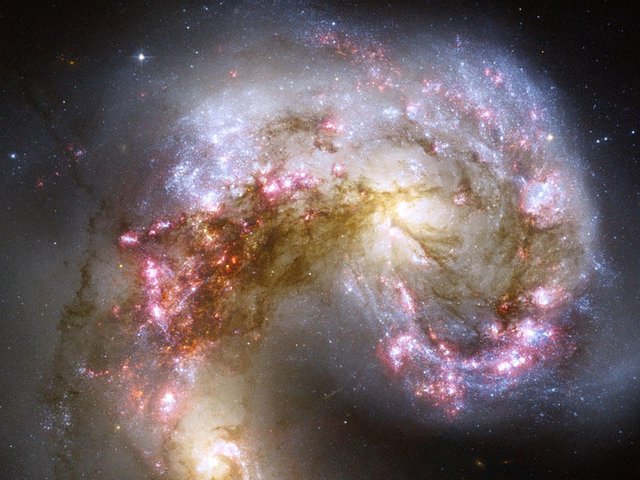
Island Universes
In 1924 Edwin Hubble proved that Cepheid variable stars lay outside of our galactic influence, which showed that there are other galaxies just like ours. It meant that the universe was bigger than most imagined.
In 1929 he discovered that galaxies were moving away from ours by measuring its redshift. Redshift is what happens to light from an object when it is moving away from us, if something is moving towards us it registers more to Blueshift. This is called Hubble’s Law, and it showed that the universe is expanding. Later astronomers calculated that the expansion is accelerating. One odd thing about the nearby Andromeda galaxy though, it registered towards the blueshift – that meant it was getting closer.
In 2012, after tracking Andromeda for nearly a decade, astronomers were able to make an estimate on how fast it is approaching us. They discovered that the distance is shrinking by 110km per second (68mi), or about the speed necessary to travel from Earth to the Moon in one hour, giving us a 4 billion year warning.
During this collision (Technically the term is ‘Tidal Interaction’, but I am going to say galactic collision because it sounds way cooler), not only will some stars be thrown into the depths of space to travel alone, some will be destroyed when they are ‘eaten’ by the supermassive black holes at the center of our two galaxies. When it happens our two galaxies will become one and, like many babies still in the womb, it already has a name – MilkOmeda.
Galactic Collisions
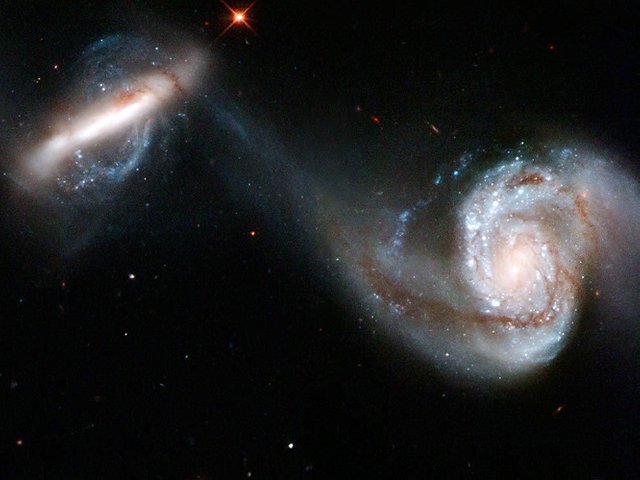
While amazing, these galactic collisions are very common in the universe and are just part of what some people call the evolution of our universe. Often the momentum is not enough for one of the galaxies to continue on, so the gravitational pull causes a dance as the two merge. It is quite beautiful in photographs.
If one of the galaxies is much larger than the other it will be able to hold its shape, and while Andromeda is about 3 times as large as ours – 1 trillion stars to 300 million in the Milky Way – it is predicted that Milkdromeda will be an elliptical galaxy. That means the ‘arms’ of the galaxy will be lost and it will become radial, more uniformly spread out. A few models show it may become a large disk galaxy.
It is believed that the Andromeda galaxy has already undergone a collision previously, probably more than once, to achieve its 1 trillion stars. It is just how the universe works, the bigger prey on the smaller. In fact, the Milky Way has eaten some of its neighbors in the past and is actually gobbling up a few right now, like the Canis Major dwarf galaxy.What Happens
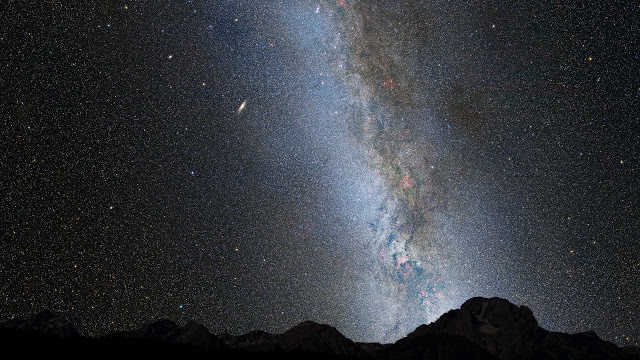
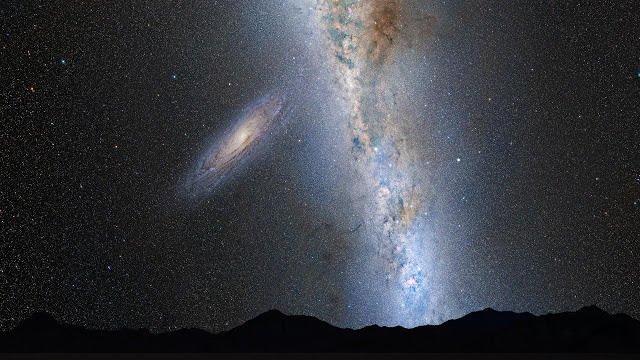
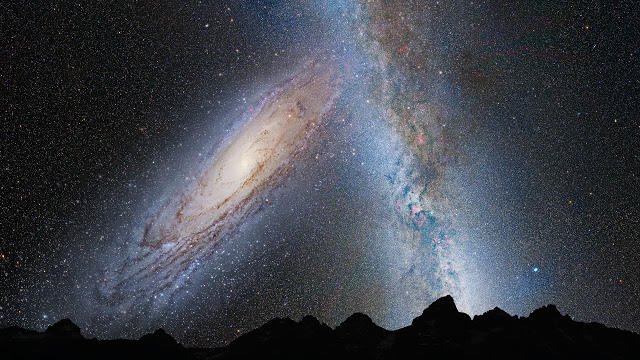
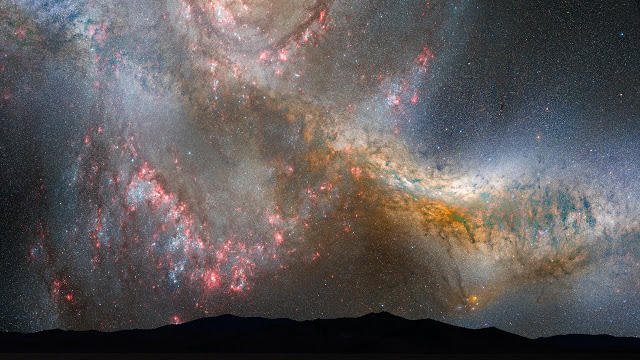
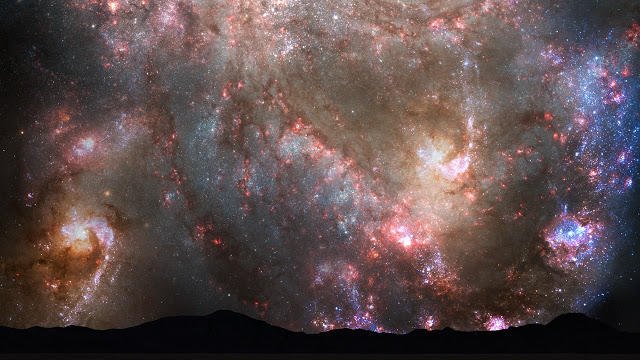
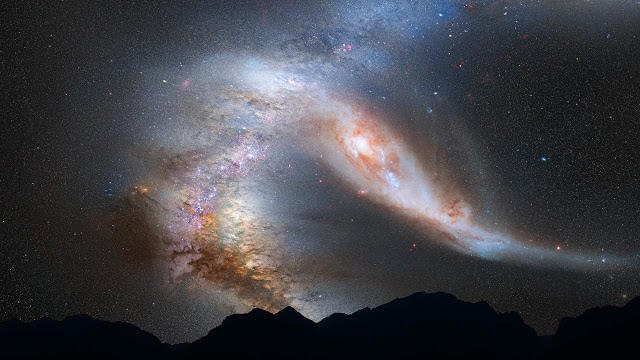
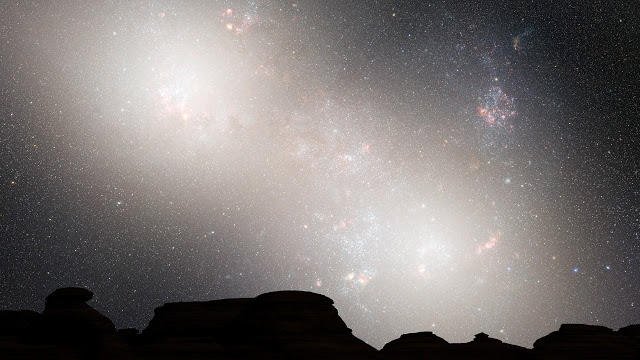
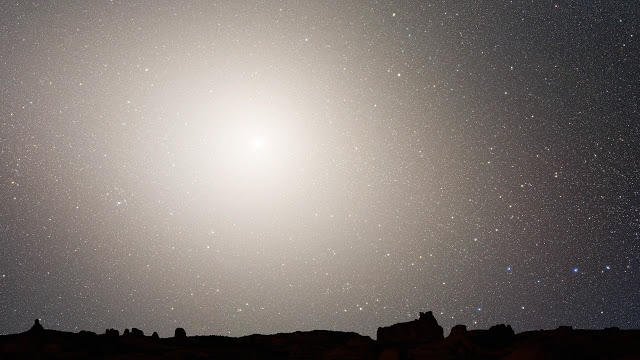
While it is very difficult to know for certain, it has been calculated by researchers at Harvard–Smithsonian Center for Astrophysics that there is a 50% chance that our Solar System will be relocated 3 times further away from the new galaxies core than our current distance. Also there is a 12% chance that it will be thrown out from the galaxy completely.
Not to worry about that, before all this gets going in around 3.75 billion years from now it is estimated that our Sun will become too hot for liquid water to exist on the surface of Earth. But it will sure be pretty in Earth’s night sky though.
It is not all bad news.
The chance for actual collisions between stars is minuscule because of the enormous distances between any two.
For example, the nearest star to the Sun is Proxima Centauri, about 4.2 light-years (4.0×1013 km; 2.5×1013 mi) or 30 million (3×107) solar diameters away. If the Sun were a ping-pong ball, Proxima Centauri would be a pea about 1,100 km (680 mi) away, and the Milky Way would be about 30 million km (19 million mi) wide. Although stars are more common near the centres of each galaxy, the average distance between stars is still 160 billion (1.6×1011) km (100 billion mi). That is analogous to one ping-pong ball every 3.2 km (2.0 mi). https://www.quora.com/What-is-the-process-when-two-galaxies-collide
Galactic collisions have been shown to kick start new star formation as well.
Researchers from the Leiden Observatory studied a collision between galaxies two-billion light years away and noticed new stars being formed in what was considered a dead galaxy. The gas clouds that are part of both galaxies is massive, but it was also mainly dormant. The tumultuous crash shook these clouds from their slumber and they started to collapse to form new stars.
Consequences
Sometime about 4 billion years from now our two galaxies will pass through each other before gravity arrests the momentum and pulls us together. The two black holes will emit gravitational waves until they completely merge. Stars and gas will be ejected, while others will have their orbits around the galactic center changed. New stars will be formed as the gas clouds are pushed together by gravity and collisions. It will take around 2-3 billion years for the new galaxy to settle down, but it will now be a large elliptical one.
This is much more preferable than what we currently understand is going to happen to the universe.
Since the discovery of dark energy in 1998 we learned not only is the universe expanding, the speed of that expansion is accelerating. Eventually, distant galaxies will be moving away from us faster than the speed of light. Only the 50 or so local galaxies, tied together by gravity, will be visible – all eventually merging together in about 150 billion years. Everything else will fall over the cosmic horizon and be lost forever.
If intelligent life happens to still be able to evolve then they will see one massive and ancient galaxy. They will be unable to see anything else past it, just dark nothing. All clues to the big bang will have vanished. All they will have is billions of dead, worn out stars and precious few young ones.
It will truly be a cold, dark and lonely place for them. Living on a dying island universe in a vast and empty sea.
Sources:
- What Happens When Galaxies Collide?
- NASA's Hubble Shows Milky Way is Destined for Head-On Collision
- Galaxy Collisions
- Galaxies: Collisions, Types & Other Facts
- Andromeda–Milky Way collision
My moment of honesty:
- My interests vary but I strive for quality work, check my blog for proof.
- I will not fill up your feed with crap, I have only resteemed once.
- I will also reply to all your comments if they warrant any reply.
- These things I promise to you. So follow me, or don't. I want you to do what you want to.
@getonthetrain
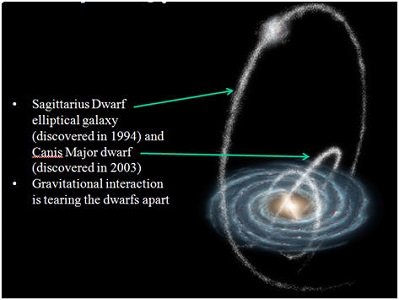
I always enjoy reading your posts. I learn something new just about every time. Thank you for sharing! :)
That's such a nice comment, thank you.
This was an interesting post, thanks for it!
You're welcome! :D
wouldn't that be an argument against the big bang theory?
Which part everitt?
Amazing article, @getonthetrain, as always is the case with your posts!
It just goes to show how infinitesimally small we all are given the much larger picture. Let's hope we can all survive together long enough on this planet, leave alone being wiped out by some astrological disaster! :)
I love your blog so much and can't praise all your hard work and effort enough.
Absolutely fantastic stuff, bro! Look forward to the next one eagerly! :)
Thanks my friend. I can't wait to read your next short story, your writing is out of this world! :D
Nice article, I'm always fascinated by space!
Me too!
Well, I'm sure our government will try to throw some anti-trust legislation at these mergers.
If it moves - tax it, if it keeps moving - regulate it
Sounds like a fit for this situation
I really like your "moment of honesty" points at the bottom of your posts. Smart idea.
Thanks, it has gone through a few iterations before becoming what you see here. Shorter and clearer.
I understand. Everything evolves. If you don't mind I might steal your idea and add my own little notes on my posts.
I may have thought it up, but I don't own it. Go right ahead.